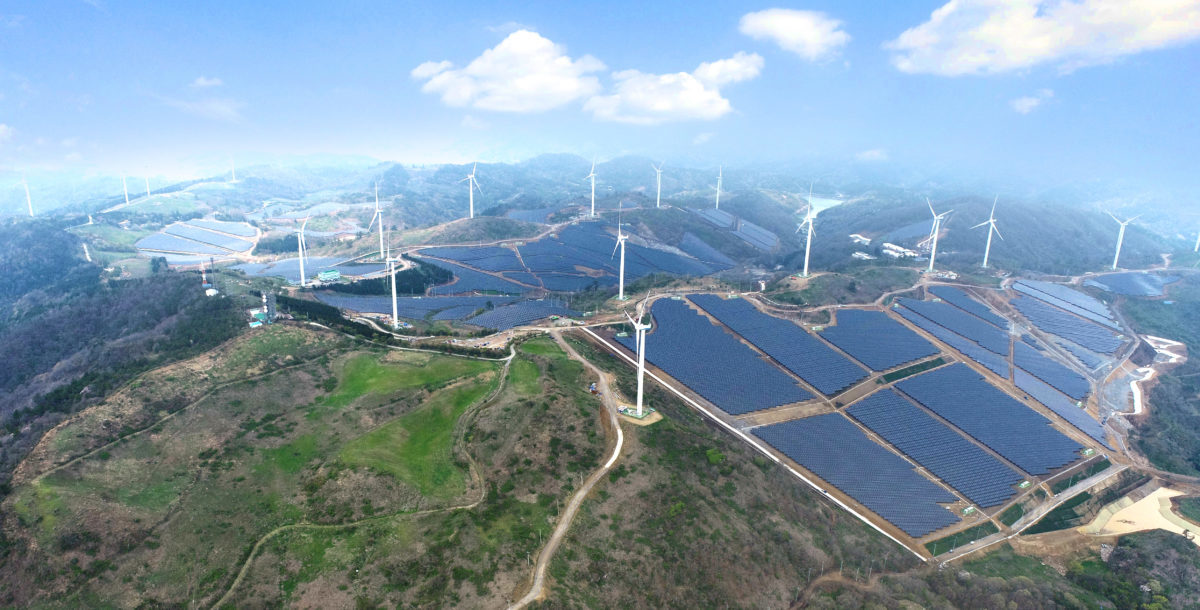The “biggest bottleneck” facing South Korea’s solar energy expansion is the separation distance recommendations said Jaebin Choe, renewables permitting team researcher at Seoul-based environmental advocacy organization Solutions for our Climate (SFOC).
Federal guidelines recommend solar PV installations be sited a minimum distance 100 meters from residential houses, but Choe told pv magazine many local governments trying to expand solar have “resorted to exceptional clauses to bypass the separation distance regulations,” he said.
“But these measures can be a temporary fix at best and cannot solve the fundamental issue,” he added.
South Korea’s Ministry of Trade, Industry and Energy (MOTIE) introduced recommendations for sited solar requirements in 2017. A year following the announcement, 68 local governments introduced their own guidelines. Choe said the federal guidelines did not “reflect the challenges” facing local governments, which respond to residents’ queries and complaints.
Choe’s fresh criticism comes as SFOC, in collaboration with researchers from the University of Maryland, this week published a research brief stating Korea’s current Electricity Basic Plan and Carbon Neutrality Plan were not congruous with the country’s Nationally Determined Contribution (NDC) target. The target sets out to reduce greenhouse gas emissions 40% by 2030.
The report blamed South Korean policy misalignments and delayed coal-to-renewable energy transitions for not reaching the mark.
“As of August 2023, there are 30 coal-fired power plants (85 units, a total of 40.2 GW) in operation, and two new units (2.1 GW) under construction in Samcheok City,” the report stated. “Following the announced retirements and a 30-year lifetime for the remaining plants, 51 units (28.7 GW) remain operating by 2035, and a complete coal phaseout does not occur until 2050. Therefore, accelerated coal retirement is needed to close the gap.”
Popular content
The paper claimed that “rapid decarbonization of the power sector” was key to achieving the 1.5 C low-overshoot pathway.
“Our analysis suggests that by 2030, 45% of total electricity generation that is provided by renewable sources of energy, mostly solar and wind generation, can exceed both the prior target and the current 10th Electricity Basic Plan. To achieve this level of generation, over 100 GW of renewable capacity needs to be installed by 2030, which requires adding 10–12 GW new capacity per year between today and 2030,” the report reads.
Choe said the government introduced renewable portfolio standards (RPS) in 2012 to accelerate the procurement of renewable energy, including solar PV. “Yet, the government has lowered the RPS ratio earlier this year,” he said. “It also downgraded the 2030 national target for renewable energy generation from 30.20% to 21.6%, which subsequently lowered this year’s goal for additional procurement for solar energy from 3 GW to 2.5 GW.”
The five-year Korean feed-in tariff (FiT) scheme ended this year without an alternative policy, Choe added.
Jinsun Lee, SFOC’s head of power market and grid, told pv magazine that South Korea could get back on track if the coal-to-renewable transition was expedited “as quickly as possible”. “The expansion of solar is important for the same reasons that renewable energy deployment is critical,” she said. “It will help the country utilize the full potential of its resources while reducing emissions and mitigating the climate crisis.”
This content is protected by copyright and may not be reused. If you want to cooperate with us and would like to reuse some of our content, please contact: editors@pv-magazine.com.


sir madam
How are you i hope you are fine. I am Shahid Hussain Rajput from Pakistan i am solar systems Technician in Pakistan. I have 10 year experience in solar systems on grid off-grid and hybrid systems. I am seeking job in solar systems related . I honest my work.
Thanks. shr03031975@gmail.com. 00923330606112.